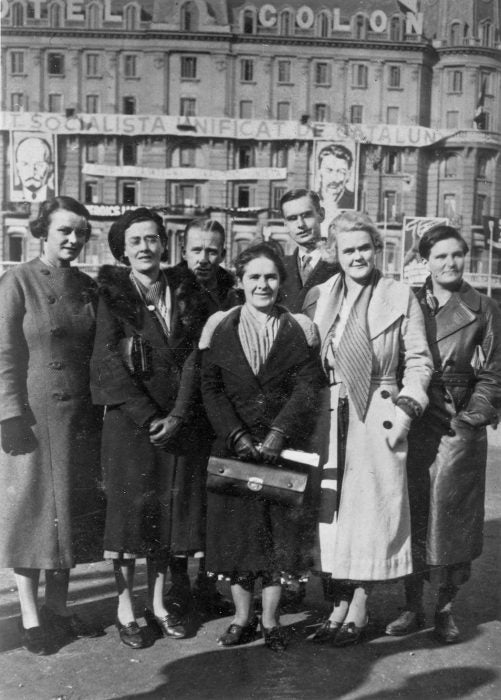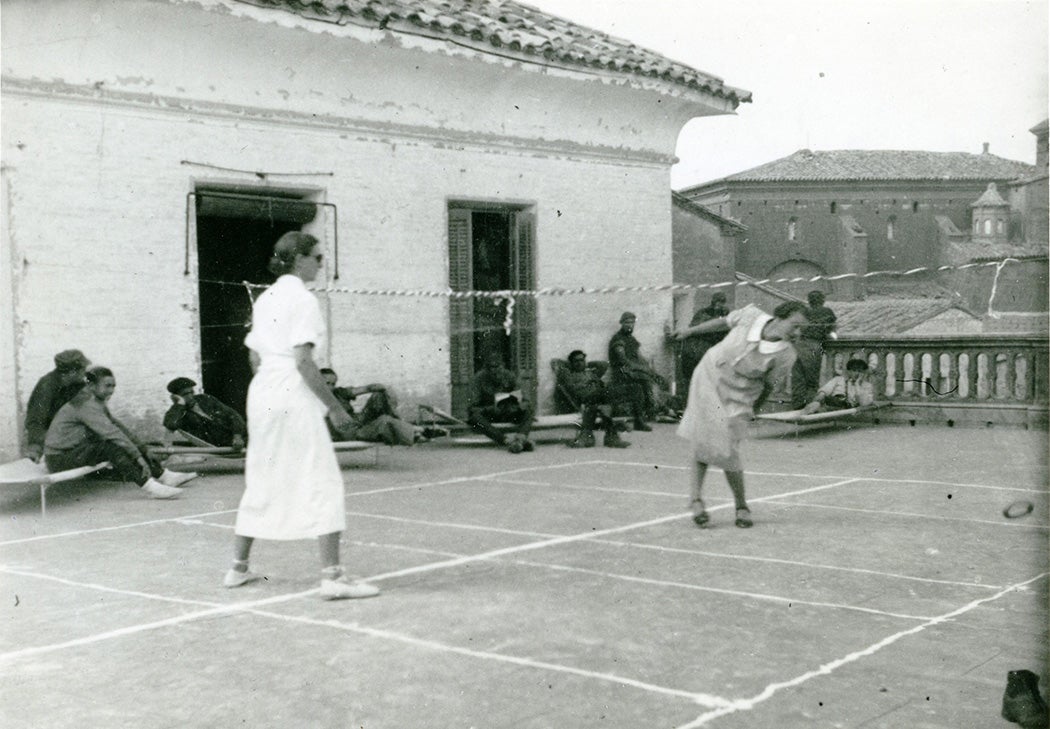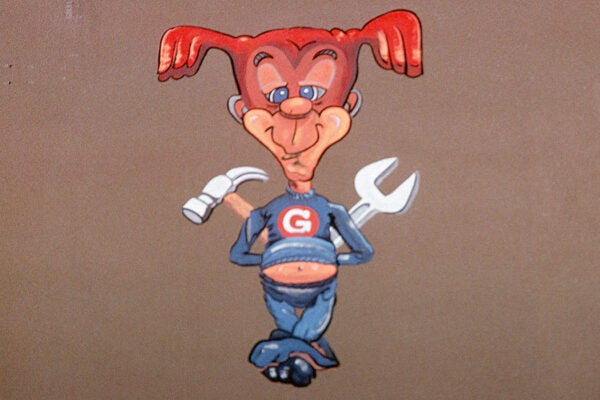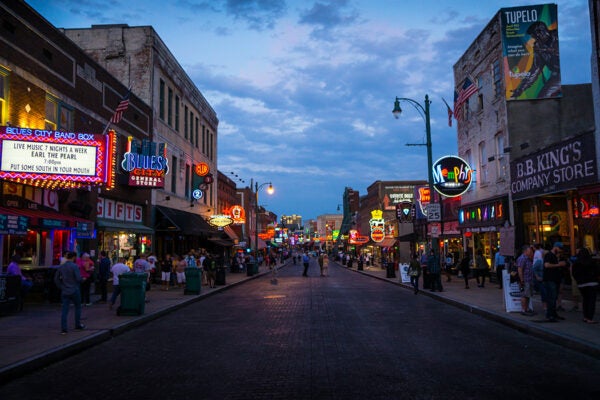Spend a moment with the following photograph and consider what you see.
Although information abounds in images, rarely are they received as more than illustrations of text or narration. Yet visual information can often provide nuance that words cannot describe so elegantly.
What Do You See?
In the photograph above, you may have identified a group of people posing in front of a building. Perhaps you noticed banners with text hanging from the building, discerning from the language that this photo was taken somewhere in Europe. At this point, it is tempting to look for a caption or description to contextualize the image and resolve any questions. But wait!
The Subjects
Instead look closer. More information exists than is obvious at first glance. In the center of the photograph, a person wearing a coat and gloves smiles for the camera while gripping a utilitarian bag. Around this person, four others face forward and smile stiffly, indicating that this is a posed photo, maybe one taken to commemorate an occasion. None of these people are touching, indicative of colleagues or acquaintances rather than close friends or family.
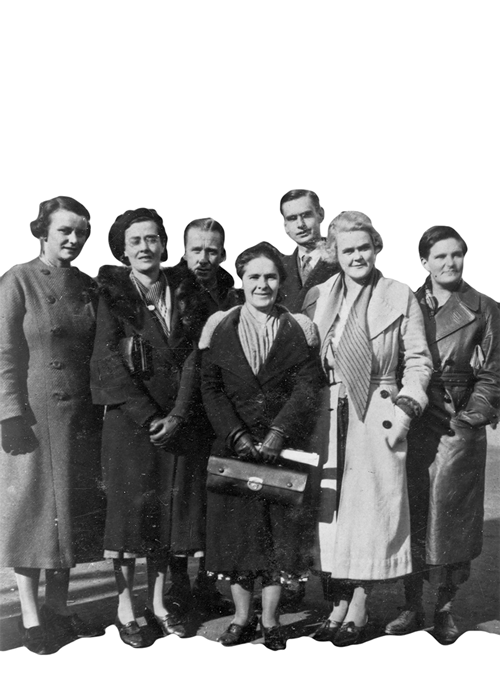
The Foreground
Although the photograph is cropped tightly, one detail remains visible in the foreground. In front of the figures are shadows, which could reveal the time of day or at least tell us that there are a few people around who did not make it into the photograph. Perhaps this is a gathering of some sort.
The Background
Behind the figures looms a large, multi-story building. Streetlights punctuate the building’s façade, but no trees are visible. The people are in a city. The permanent signage on the building reads “OTEL COLON”—is this the name of a hotel? Perhaps the group is staying there because they are not from this place. Temporary banners hang on the building’s face, as well. The largest reads, “IT SOCIALISTA UNIFICAT DE CATALUN,” and the first letters seem to be cut off, similar to the incomplete “HOTEL” sign above. While the lower banners are difficult to make out, the word “COMMUNISTA” is visible, as are two portrait banners and a portion of what appears to be a propaganda poster behind the head of the rightmost person, reminiscent of Soviet-era prints.
Subject, Foreground, Background
This kind of sustained looking is one way to approach images and encourage visual information to reveal itself, by considering the photograph’s content in visual groups: subject, foreground, and background. Examining these individually provides the conditions necessary to uncover more meaning than was initially apparent. When these elements are observed and connected, it becomes more apparent that this photograph captures a group of travelers, perhaps medical workers based on the central figure’s bag, visiting Spain during a time of unrest involving socialism and communism. With a bit of historical context, they can be identified as international volunteers in Barcelona during the Spanish Civil War.

Some of this information can be gleaned from the identifying information, or metadata, associated with the photograph. For images like this one, a caption may reveal more details about the photograph’s contents, verifying hunches and leading to additional material illuminating the figures and their world. Yet even when text provides information about an image, practicing close looking unlocks more discoveries in an image and enriches understanding of the associated text.
In this case, what text cannot adequately communicate is the look of cautious, perhaps determined, optimism on the figures’ faces. Nor can a caption capture the sense of environment, the experience of foreigners standing in a city street amid a complicated, violent, and highly photographed struggle between two world wars.
Patient, contemplative looking, what Shari Tishman dubs “slow looking,” requires sustained attention and curiosity in the face of visual stimuli. In return for this effort, it delivers information in droves and nuance far beyond what a quick glance at an image allows.
Try this exercise with the following image. Start by examining:
- Subject: What do you see in the middle ground, or focus of the following image?
- Foreground: What is in front of the subject?
- Background: What is behind the subject?
Then, revisit the details and connect the dots. What details in each area could provide clues to understanding? How do the details seem to relate to each other?
Follow this “Learning to Look” column via RSS Feed.
Are you an educator? Try close looking with your students using this lesson plan:
Support JSTOR Daily! Join our new membership program on Patreon today.



